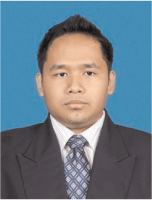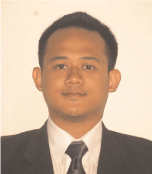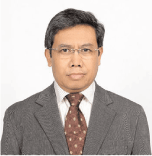Pore-pressure prediction derived by common-reflection-surface (CRS) stacking seismic velocity to prevent drilling problems in geopressure zones: a case study of Snapper Field, Gippsland Basin, Australia
Goldy Oceaneawan A , Noer Samsoe A , Telaga Kautsar A , Aditya Suharsono A and Leksono Mucharam ABandung Institute of Technology.
The APPEA Journal 53(2) 485-485 https://doi.org/10.1071/AJ12096
Published: 2013
Abstract
Snapper Field is located in the Gippsland Basin, Australia. The field was discovered in 1968, and then continued by development drilling from the Snapper A platform, which started in 1981. The geopressure zones were encountered below 3,200 m at the Snapper—1 well and below 2,800 m at the Snapper A—21 well. If these zones are not anticipated before drilling, they could create problems, such as sticking, kick, or blowout.
This extended abstract presents a technique to predict pore pressure from seismic velocity, where the seismic velocity was derived by CRS. Many case studies have shown that CRS stack could produce smooth macro-velocity model, which is more reliable to be used for pore pressure prediction. Eaton’s equation was used to transform the seismic velocity derived by CRS to pore pressure as a function of depth. All of these workflows have been conducted using field data from the Snapper Field provided by the Victorian Department of Primary Industries.
The prediction was compared with actual well pressure data to test the accuracy of prediction. The comparison shows that the pressure, which has been generated using this technique, is accurate. This result could be applied when making drilling programs particularly to identify the geo-pressure zones for wildcat/exploration wells in another field when pressure data from neighbouring wells are unavailable. If these geo-pressure zones could be anticipated, it will reduce drilling risk operation.

Goldy Oceaneawan is a graduate student of Petroleum Engineering from Bandung Institute of Technology, Indonesia. He has a ITB-IFP Professional, a Master of Petroleum Engineering Scholarship from Total E&P Indonesie for his masters degree. He also hold a bachelor degree in (geophysics) from Gadjah Mada University, Indonesia. He has two years of experience in petroleum-data management and application support with Alliance Geotechnical Services and Geotech Systems Indonesia and he has done several project assignments at BP Indonesia and VICO Indonesia. In 2010, he wrote and presented a scientific publication at The International Geoscience Conference and Exposition 2010, hosted by Society of Exploration Geophysicists (SEG) and the Indonesian Geophysicists Association (HAGI) at Nusa Dua, Bali, Indonesia. Presently, he has defended his thesis: The importance of appropriate reservoir modeling for forecasting future performance in a gasfield with naturally fractured carbonate reservoir. Nowadays, he is more interested in geoscience and reservoir enginerring studies. |

Noer Samsoe graduated from Bandung Institute of Technology (ITB) with a bachelor’s degree (geophysics). Between 2009 and 2012, he geophysicist in several projects about seismic-acquisition design and seismic-data processing (2D/3D PSTM, PSDM). His studies in the petroleum engineering program (specialty in pore pressure prediction using seismic data) at ITB is scheduled to finish at the end 2013. |

In 2011, Telaga Kautsar obtained a bachelor’s degree (applied mathematics) from Bandung Institute of Technology (ITB), Indonesia. During his study, he also took several minor courses about petroleum engineering. In August 2011, Total E&P Indonesia collaborated with ITB and Institut Francais du Petrole (IFP) to give him a scholarship to continue his study in the master program of petroleum engineering at ITB. He completed this master’s degree in March 2013. He published his thesis A new correlation for economical plateau gas rate optimisation. Between 2011 and 2012, he was a research assistant at Research Consortium Optimization Pipeline Network. At the beginning of 2013, he was involved in an internship program at Total E&P’s reservoir team in Balikpapan, Indonesia. |

Aditya Suharsono studied petroleum engineering at Trisaksi University, Jakarta, Indonesia. On January 2010, he completed the final assignment at the Indonesian Government’s Research Institute for Oil and Gas (LEMIGAS): Rock permeability reduction and low oil recovery caused by salinity of water injection, pore throat size, siderite and clay mineral content in X field. He holds a bachelor’s degree (petroleum engineering), obtained in August 2010. In August 2011, he continued to a master’s degree (petroleum engineering) at Bandung Insitute of Technology (ITB). Now, he is studying about reserve estimation of the reservoir using decline curve analysis method and sensitivity study of reservoir properties to understand reservoir behavior for his thesis. He is scheduled to completed this master’s degree in mid 2013. |

Leksono Mucharam is a professor (petroleum engineering) at Bandung Institute of Technology (ITB), Indonesia. In 1983, he received a MSc in (petroleum engineering) from the University of Southern California. In 1989, he received a PhD (petroleum and natural gas engineering) from the Pennsylvania State University, Pennsylvania. More than 30 of his papers in those fields have been published and presented in many important conferences and symposiums. |
References
Bowlers, G.L. (2002). Detecting high overpressure. The Leading Edge 21, 174–77.Eaton, B.A., 1975—The equation for geopressure prediction from well logs. Fall Meeting of the Society of Petroleum Engineers of AIME, Dallas, Texas, 28 September—1 October, 5544-MS.
Geoscience Australia, 2012—Regional study of Gipssland Basin. Canberra, Australia: Department of Resource, Energy and Tourism, Australia Government.
Mann, J., Jager, R., Muller, T., Hocht, G., and HubraL, P. (1999). Common reflection surface stack—a real data example. Journal of Applied Geophysics 42, 301–18.
Swarbrick, R.E., 2001—Pore pressure prediction: pitfalls in using porosity, Offshore Technology Conference, Houston, Texas, 30 April—3 May, 13045-MS.


